The Bull Terrier: A Canine Icon of Charm and Character
Dive into the fascinating world of the Bull Terrier, a breed renowned for its distinctive appearance and spirited personality. From its intriguing origins to its role as a beloved companion, this comprehensive guide explores every facet of this unique canine, offering insights for enthusiasts, researchers, and anyone captivated by the animal kingdom.
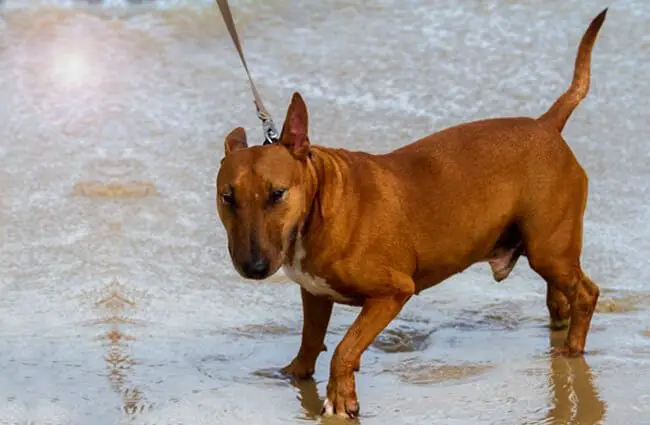
Unmistakable Appearance: The Signature Silhouette
The Bull Terrier is instantly recognizable, primarily due to its striking head shape. Often described as “egg-shaped” or “down-faced,” its skull slopes gently from the top of the head to the tip of the nose, devoid of a stop. This unique profile, combined with small, triangular eyes that are set close together and high on the head, gives the breed an almost mischievous or intense expression. Their bodies are muscular and robust, reflecting their heritage as powerful working dogs. They typically possess a short, flat coat that comes in a variety of colors, including pure white, brindle, red, fawn, and tricolor. Males generally stand between 21 to 22 inches at the shoulder and weigh 50 to 70 pounds, while females are slightly smaller.
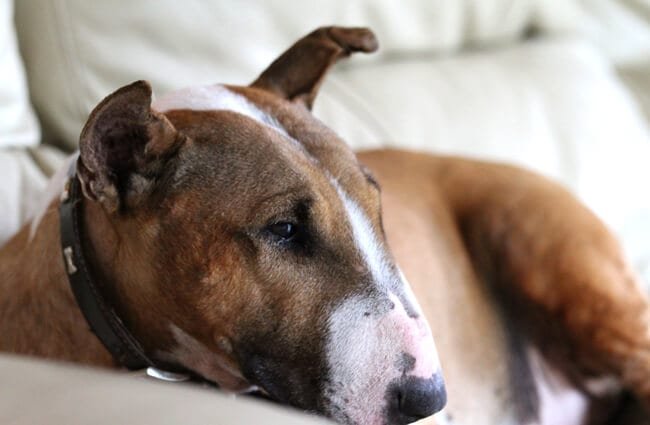
Temperament and Personality: A Spirited Companion
Beneath their formidable exterior lies a heart full of exuberance and affection. Bull Terriers are known for their playful, clownish, and sometimes stubborn nature. They possess a strong will and a high energy level, requiring consistent training and ample mental and physical stimulation. Despite their historical background, well-socialized Bull Terriers are generally good-natured with their families, often forming strong bonds with children. They are courageous and protective, making them excellent watchdogs, but their inherent friendliness usually prevents them from being aggressive without provocation. Early socialization is paramount to ensure they develop into well-adjusted adults, comfortable around strangers and other animals.
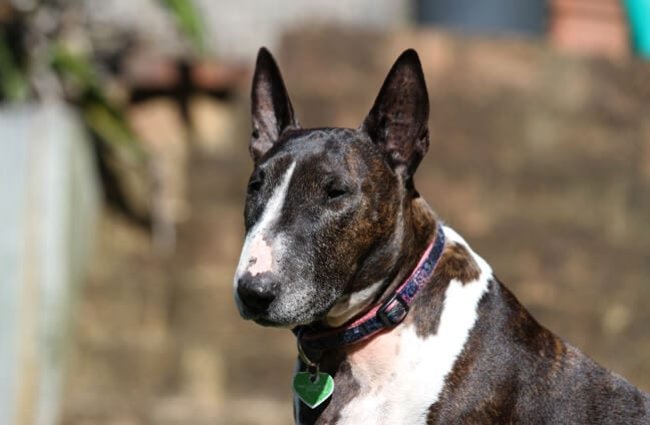
The Bull Terrier’s Journey: From Origins to Modern Day
Understanding the Bull Terrier requires a look back at its fascinating evolutionary path, a testament to human selective breeding and adaptation.

Evolutionary History: A Tale of Crossbreeding
The Bull Terrier’s lineage traces back to 19th-century England. During this era, dog fighting and bull-baiting were unfortunately popular, leading to the creation of breeds specifically for these purposes. The original “Bull and Terrier” breeds were crosses between Old English Bulldogs and various terriers, aiming to combine the Bulldog’s strength and tenacity with the terrier’s agility and gameness. James Hinks, a Birmingham dog dealer, is credited with refining this type in the 1850s. He selectively bred the Bull and Terrier with the now-extinct English White Terrier and possibly Dalmatians and Spanish Pointers, aiming for a cleaner, more uniform appearance and a less aggressive temperament. Hinks’s goal was to create a “White Cavalier,” a dog that was powerful yet elegant, and a gentleman’s companion. This meticulous breeding process resulted in the distinct egg-shaped head and the predominantly white coat that characterized the early Bull Terriers. Over time, colored Bull Terriers were also developed and recognized, expanding the breed’s aesthetic diversity.

Habitat and Distribution: A Domesticated Existence
Unlike wild animals with natural habitats, the Bull Terrier is a fully domesticated species, Canis familiaris. Its “habitat” is intrinsically linked to human environments. Therefore, Bull Terriers are found wherever humans choose to keep them as companions. This includes:
- Urban and Suburban Homes: Most commonly found in houses with yards, though adaptable to apartment living if sufficient exercise is provided.
- Rural Settings: Can thrive in more spacious environments, often accompanying owners on outdoor activities.
- Breeding Kennels and Shelters: Temporary habitats for dogs awaiting adoption or involved in breeding programs.
It is crucial for aspiring zoologists and animal lovers to understand that Bull Terriers do not exist in the wild in any traditional sense. Any Bull Terrier encountered outside of a human-controlled environment is either a lost pet, a stray, or an abandoned animal. Their survival in such conditions would be challenging due to their reliance on human care for food, shelter, and protection.
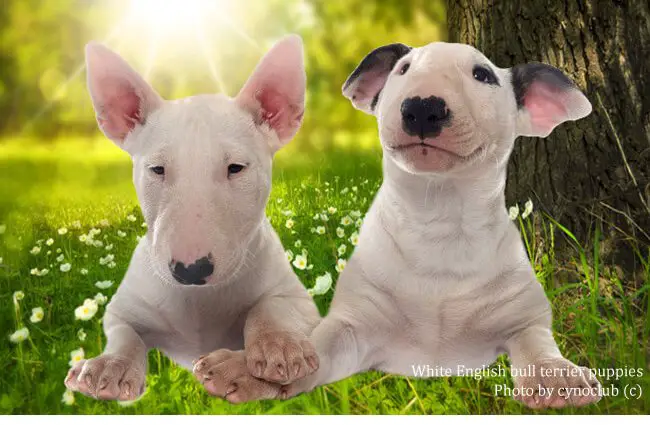
Diet and Nutritional Needs
As domesticated carnivores, Bull Terriers require a balanced diet formulated for dogs. Their dietary needs are similar to those of other medium to large breeds, with an emphasis on high-quality protein sources. A typical diet consists of:
- Commercial Dog Food: High-quality kibble or wet food specifically designed for active breeds.
- Raw or Home-Cooked Diets: Some owners opt for these, but they require careful planning with a veterinary nutritionist to ensure complete and balanced nutrition.
- Supplements: May be recommended by a veterinarian for specific health concerns, such as joint health or skin conditions.
Overfeeding should be avoided as Bull Terriers can be prone to obesity, which exacerbates joint problems and other health issues. Fresh water must always be available. Dietary considerations for Bull Terriers also include potential sensitivities. Some individuals may develop allergies to certain ingredients, necessitating a limited ingredient diet or consultation with a veterinarian.
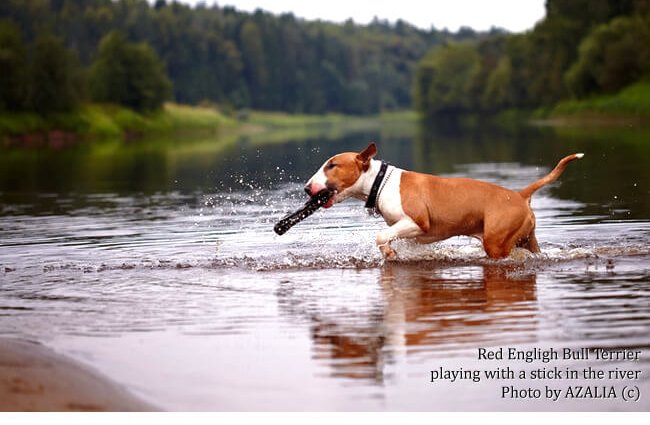
Mating and Reproduction: A Managed Process
Bull Terrier reproduction is almost exclusively managed by humans through responsible breeding programs. The natural reproductive cycle of a female Bull Terrier (bitch) involves:
- Estrus Cycle: Females typically come into heat (estrus) twice a year, usually starting between 6 to 12 months of age. The cycle lasts approximately 2 to 3 weeks.
- Mating: Breeding usually occurs during the fertile window of the estrus cycle. Responsible breeders carefully select mates based on health, temperament, and adherence to breed standards.
- Gestation: Pregnancy lasts approximately 63 days.
- Litter Size: Bull Terriers typically have litters ranging from 5 to 9 puppies, though this can vary.
- Parental Care: The mother provides all initial care for the puppies, including nursing, cleaning, and protection. Human intervention is crucial for monitoring the health of both mother and puppies, especially during whelping (birthing).
Due to the breed’s unique head shape and robust build, some Bull Terrier bitches may require veterinary assistance during whelping, with C-sections being more common than in many other breeds to ensure the safety of the mother and puppies. Ethical breeding practices are vital to maintain the health and genetic diversity of the breed, screening for common health issues such as deafness, heart conditions, and kidney disease.
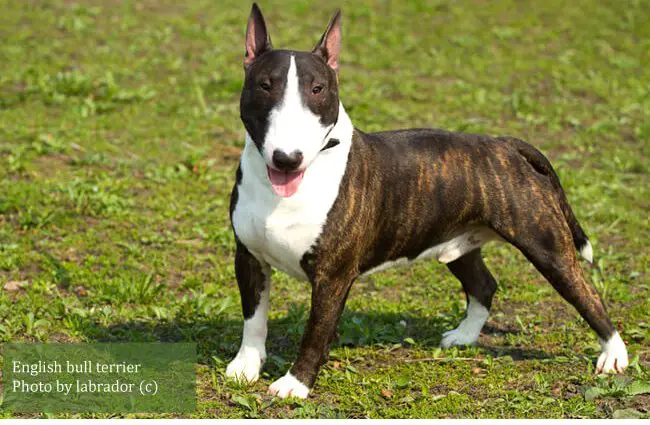
Bull Terriers in the Human and Natural World
While primarily companion animals, Bull Terriers interact with their environment and human society in various significant ways.
Contribution to Ecosystem and Interaction with Other Animals
As domesticated animals, Bull Terriers do not contribute to natural ecosystems in the same way wild species do. Their ecological footprint is largely determined by their human caretakers. However, their presence can indirectly impact local environments:
- Waste Management: Proper disposal of waste is essential to prevent environmental contamination.
- Prey Drive: Like many dog breeds, Bull Terriers retain a prey drive. If allowed to roam unsupervised, they could potentially disturb local wildlife, though this is rare for a well-controlled pet.
- Interaction with Other Domestic Animals: With proper socialization, Bull Terriers can coexist peacefully with other dogs and even cats. However, their strong prey drive means introductions to smaller pets should always be supervised.
Their primary “ecosystem” is the human household, where they form part of a complex social structure. Their interaction with other animals is predominantly within a controlled, domesticated context.
Contribution to Human Culture
The Bull Terrier has carved a distinct niche in human culture, transcending its role as a mere pet:
- Iconic Advertising: Perhaps most famously, the Bull Terrier is the mascot for Target stores, “Bullseye,” a pure white Bull Terrier with a red target painted around one eye. This has significantly boosted the breed’s public recognition.
- Literature and Film: Bull Terriers have appeared in various cultural works, often portraying loyal, brave, or comical characters.
- Art and Design: Their unique silhouette makes them a popular subject for artists and designers.
- Companionship and Therapy: Beyond their striking looks, their affectionate and sometimes goofy nature makes them cherished family members and, in some cases, effective therapy dogs.
Interaction with Humans: A Deep Bond
Bull Terriers are deeply integrated into human lives. They thrive on human companionship and attention. Their interaction is characterized by:
- Loyalty: Known for their unwavering devotion to their families.
- Playfulness: They retain a puppy-like exuberance well into adulthood, enjoying games and interactive play.
- Trainability: While intelligent, their stubborn streak requires patient, consistent, and positive reinforcement training. Early socialization is crucial for developing good manners and preventing behavioral issues.
- Protective Instincts: They are naturally protective of their families and homes, making them excellent deterrents, though rarely aggressive without cause.
Practical Insights: For Enthusiasts and Professionals
Whether you are an aspiring zoologist, a potential owner, or a professional caregiver, understanding specific scenarios involving Bull Terriers is vital.
Encountering a Bull Terrier in the “Wild”: What to Do
It is important to reiterate: Bull Terriers are not wild animals. If you encounter a Bull Terrier “in the wild” (meaning, loose or stray in an uncontrolled environment), it is almost certainly a lost or abandoned domestic animal. Here’s what to do:
- Maintain Calm: Approach cautiously and calmly. Sudden movements can startle any dog.
- Assess the Situation: Observe the dog’s demeanor. Is it friendly, fearful, or aggressive? Do not approach if it appears aggressive or injured.
- Do Not Chase: Chasing a lost dog will likely make it run further away.






![Red Angus Closeup of a beautiful Red Angus cowPhoto by: U.S. Department of Agriculture [pubic domain]https://creativecommons.org/licenses/by/2.0/](https://animals.net/wp-content/uploads/2020/03/Red-Angus-4-100x75.jpg)

